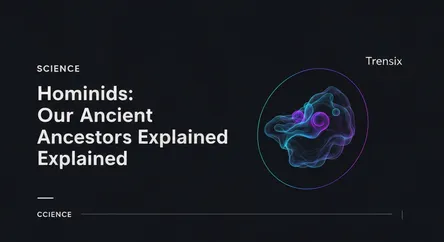Science
Hominids: Our Ancient Ancestors Explained

Discover hominids, the primate family including great apes and all early human ancestors. Learn about their evolution and our shared lineage.
What is it?
A hominid refers to any member of the biological family Hominidae, also known as the great apes. This group includes living species like humans, chimpanzees, gorillas, and orangutans. Critically, the term also encompasses all of our extinct ancestors after the split from other primates. These ancient relatives, such as Australopithecus (like the famous fossil 'Lucy') and early members of the Homo genus like Homo habilis, are part of the story of human evolution. Key evolutionary trends in the hominid line leading to humans include the development of bipedalism (walking on two legs) and a significant increase in brain size.
Why is it trending?
The study of hominids is constantly in the spotlight due to exciting new fossil discoveries and advancements in scientific analysis. Archaeologists and paleontologists frequently unearth remains that challenge or refine our understanding of the human family tree, generating significant media attention. Furthermore, breakthroughs in ancient DNA sequencing allow scientists to piece together genetic relationships between different hominid species, including our connections to Neanderthals and Denisovans, keeping this field of research dynamic and fascinating.
How does it affect people?
Understanding hominids directly impacts our sense of self and our place in the natural world. It tells the profound story of where we come from, tracing the millions of years of evolutionary history that shaped our bodies and minds. This knowledge influences everything from medicine, by helping us understand genetic predispositions to certain diseases, to anthropology, by providing context for human behavior and social structures. The study of our hominid ancestors connects all of humanity to a shared, deep African origin, highlighting the fundamental unity of our species.